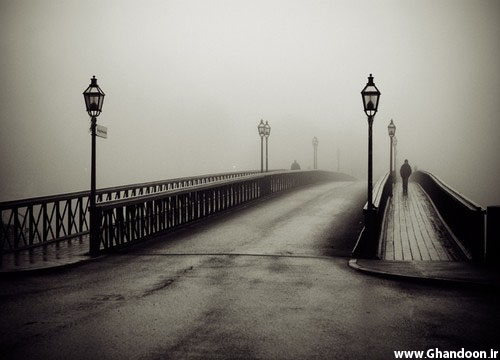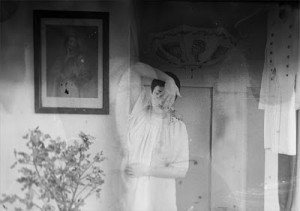A series of talks by Michael Stone about chapter 3 of The Yoga Sutra a text written by mysterious author(s) often named Patanjali in the second century. Notes by MH include reveries and imaginings. Centre of Gravity Fall 2011. www.centreofgravity.org
We’re going to look at chapter 3 of the Yoga Sutra, it’s the one that is often skipped over. The Yoga Sutra was compiled over many centuries 4-500 years after the Buddha’s death, and brought together strands of Buddhism and a dying philosophy called Samkhya. There has been some tension in the text’s reception, because when the Buddhists turn to it there are distinctly unBuddhist elements, and when the Vedantics try to call it their own, they are confronted by its Buddhist qualities. Perhaps this is the reason there are no temples dedicated to Patanjali. It’s a very challenging text, filled with fruitful contradictions.
Enlightenment
Patanjali deliberately misreads some traditional terms like moksha, which traditionally means enlightenment or freedom. It literally means the last phase of an eclipse. Patanjali takes the term “enlightenment” and puts it on a shelf and never uses it. Instead, he replaces it with the goal of becoming a person. He calls this purusa. Because most English translators have a Judeo-Christian bias, this word is often translated as God, or the supreme something, but purusa actually means becoming a person. The goal of the practice is to become a person. Most of us, when we think of spiritual practice we imagine getting out of neurotic habits and loops of suffering, but the aim of the practice is to be able to relate to people.

Face to Face
Dogen loved The Lotus Sutra, and particularly its insistence that teaching can happen only between a Buddha and a Buddha. In Zen this became face to face transmission. The Buddha stood beside a lake on Mount Grdhakuta, wanting to teach interdependence with the monks who were gathering there to hear him. He picked up a flower and Mahakasyapa smiled. Both the Buddha and Mahakasyapa smiled. The Buddha said that M understood teaching outside of scriptures. Perhaps the heart of the practice isn’t about lighting incense in the proper way or going on long retreats, but from giving someone your face, through face to face transmission.
Some of us who are on the path of trying to be people know how hard it is to give someone your face. It easier to look away or give our social face. When someone else’s face really arrives for you, it’s impossible to do harm to them. Michael was driving Bernie Blassman to the airport and asked about Allan Ginsberg because he knew they were friends. Allan was diagnosed and told by the doc that he had a month left to live. It turned out he had less. The first thing he did was go home and call Bernie and he said, “Bernie, I only have a few months to live, so I’m calling all my friends and asking if there’s anything I can do for them. Is there anything I can do for you?”
Usually we think of our death as a time when people will serve us in some way. But to have the spirit of the practice where the goal is to become a person – it provides an important re-reading of what is considered spiritual or mystical.

Concentration
Dharana: is a form of concentration, the 6th of 8 limbs of yoga, traditionally conceived as fixing the mind in one place. The word for mind is citta – which is your attention. Getting your attention into one place.
In every yoga pose there’s a gazing point (there are nine traditional points). The word for the point is desa, which literally means a field. When we think of concentration we usually think of it narrowing to a point. When airport pilots finish their missions they’re not allowed to leave the base for 24 hours because they’ve been functioning at such high capacity they’re exhausted. This is not concentration. Concentration is actually relaxing, settling back and taking in an entire field, receiving a field. If you settle attention into a field it doesn’t mean that nothing is happening. Perhaps this is similar to what Bernie Glassman calls bearing witness. If you can approach without knowing, giving up fixed idas about self and others, they you can open up to the field of experience. You can’t bear witness if you already have the answers. We do things to protect ourselves from having the experience we want.
The Other Shore
Dogen: Do not think that practice leads to the other shore because there is practice on the other shore and when you practice the other shore arrives.
Dogen: You don’t practice to get enlightened, you practice because you’re enlightened.
Yoga means intimacy, a collapse of subject and object, of me and you. “Other” already implies separation, every other is an act or view of exclusion, another “not me.” The other shore might be the places that trigger us, the other shore is also what you don’t want and when you practice it comes to you. I don’t want to feel these difficult feelings.
For example: when he first decided to make his community the Buddha wanted to remove the obvious traits of gender and class, so he had everyone shave their heads and wear robes made of material that was discarded by society. Only cloth that had been menstruated on and thrown away, only rags, could be used to make the robes. The stuff you don’t want to be part of your practice – it comes to you, and the stuff you think of as not-you is also practicing.

Case 52 of The Blue Cliff Record: The Great Stone Bridge of Chao Chou
There was a monk named Chao Chou who lived and practiced under a stone bridge. A traveling monk came upon the bridge and scoffed. “This is the great bridge I’ve heard about? This isn’t a real bridge, these are only stepping stones in the water.”
Chao Chou said “You just see the stepping stones, you don’t see the bridge.”
The monk asked, “What is the bridge?”
Chao Chou said “It lets asses cross, it lets horses cross.”
Meditation practice is the bridge and I’m going to use it to cross over from pain and anxiety – to cut off my feelings. I used to think that if I meditated, I would stop feeling anything at all. That worked really well for a couple of years, and then everything collapsed. When Chao Chou says that the monk only sees the stepping stones, not the bridge, perhaps he’s saying that you see only your ideas about spiritual practice. Can you see the bridge? You practice in order to become the bridge.
Patanjali says that meditation means settling citta/consciousness in a field. When you’re in a field of discomfort (your mother is sick, you have to help her dress, someone you know just needs ten minutes of your time to be listened to) – you make yourself into a bridge. You make yourself a bridge.
The Buddha made his robes from garments nobody wanted
There are people in this room who are not wanted
There are people littered all over this city
Nobody wants them
There are horses in me that I don’t want
Donkeys and anger too
And you?
What is it you discard? What are you getting rid of?
Haaaaaaaaa
Don’t stitch it up
Look up
There is a bridge and it’s right there
In and Out
Nowadays we take terms like meditation and turn them into “paying attention.” Let’s translate mindfulness as generosity, in other words, you give everything a face, even what’s on the other shore. Everything that’s not-you, shunned, abandoned, hated – this is what we’re creating bridges for. This is what we’re practicing for. What is it or who is it that you discard? Who belongs in your club and who doesn’t belong? How easy it is to lean into my yes and away from my no. But practice means yes and no. The Buddha made robes from material no one wants. There are people in this room that no one wants. There are sentences, places in our bodies, past experiences, that we don’t want. Can we make our clothes out of them? Become the bridge?

